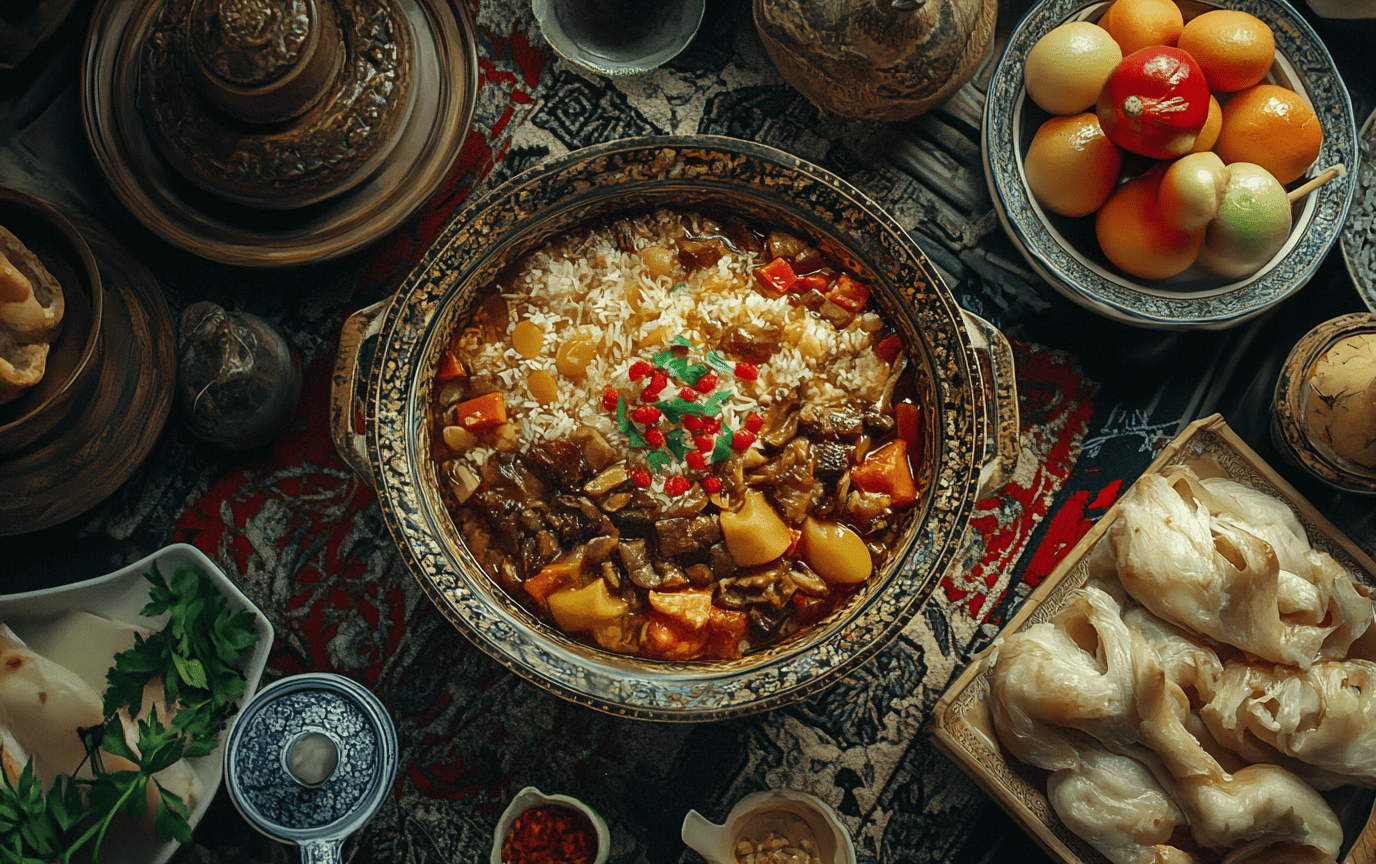The Role of Food in Cultural Identity: A Cultural Odyssey
What is it about the aroma of freshly baked bread that conjures memories of family gatherings? Why does a bowl of steaming ramen transport us back to late-night chats with friends? The truth is, food is not just sustenance; it is a profound storyteller, weaving narratives of cultural identity that traverse borders and generations. Whether it’s the spicy zest of Indian curries or the comforting warmth of Italian pastas, food encapsulates history, culture, and community in every bite. So grab your fork and join me on a journey exploring how food acts as a vessel of identity, embodies tradition, and shapes our lives.
Food as a Cultural Ambassador
Expressing Identity
Food serves as a powerful expression of who we are. It speaks in languages of spices and flavors that evoke pride and belonging. Imagine walking through the vibrant streets of Tokyo, where the delicate presentation of sushi isn’t just a meal but a slice of Japan’s meticulous culture. Sushi isn’t merely a dish; it’s an embodiment of Japanese artistry and tradition, showcasing how food represents national identity and even influences global perceptions of a culture.
In my travels, I remember sitting in a Honduran café, where the rich scent of freshly brewed coffee hung in the air. As the locals gathered, every sip connected them to generations past, instilling a sense of shared cultural heritage. Food, in this context, acts as a “language of culture,” allowing individuals to communicate their ethnicity and social identities without uttering a word.
Rituals and Celebrations
Consider how meals often serve as the centerpiece around which celebrations unfold. From joyous weddings adorned with elaborate spreads to festive holidays bursting with familiar dishes, food becomes a way of honoring traditions and reinforcing communal ties. Take the Mexican Day of the Dead, where families gather to prepare an array of traditional foods like tamales and pan de muerto. This isn’t merely consumption; it’s a heartfelt ritual that bridges the living and the dead, sustaining the essence of loved ones through flavors that evoke memories.
I once attended a Diwali celebration where the air was thick with the fragrance of fragrant biryanis and flickering oil lamps. Each dish tasted like a remembrance, a reaffirmation of communal bonds built across generations, where food transcends its basic definition and becomes a ritual of connection.
Cultural Preservation
Passing down recipes is akin to handing down family heirlooms; it preserves cultural heritage and ensures continuity across time. When I visited an elderly Italian woman in Tuscany, she invited me into her rustic kitchen and shared a treasured, handwritten recipe for her grandmother’s ragu. As she stirred the sauce, she spoke of her family’s history—the struggles, elations, and the unyielding love that bound them through the act of cooking. This exchange wasn’t just about food; it was about maintaining cultural roots and creating an enchanting narrative that bolsters familial ties.
By preserving and sharing traditional recipes, we safeguard against the loss of culinary heritage and combat the stresses of globalization. Each time a recipe is passed on, it fortifies an ancestral connection, nurturing identity in a rapidly changing world.
The Psychological Impact of Cultural Foods
Psychological Well-being
There’s something undeniably soothing about indulging in traditional foods that wrap you in a warm embrace of nostalgia. Perhaps it’s the aroma that reaches deep into your memory, reminding you of childhood comforts and family togetherness. In multicultural settings, having access to culinary traditions can enhance mental well-being, offering a sensory haven to combat feelings of alienation.
During my backpacking journey through Europe, I discovered small ethnic enclaves, places where the essence of home existed through food. In a quaint Greek taverna in London, the taste of tzatziki transported me back to sun-soaked summer afternoons spent at my grandparents’ home, where laughter mingled with the smell of grilled lamb. Sustaining that connection to one’s roots is essential for psychological health; it forms an unbreakable bond with one’s cultural identity.
Cultural Stress
In a fast-paced world that often reduces food to mere fuel, it’s easy to forget its significance. Cultural stress can arise when individuals are confronted with the challenge of navigating different food customs and practices in their new environments. This is evident when immigrants struggle to find comfort in their culinary traditions, leading to feelings of displacement. Yet food can also be a source of healing—a bridge back to comfort.
As I wandered through the bustling markets of Marrakech, the sight of fresh produce and vibrant spices felt like a soothing balm on my spirit. People surrounded me, sharing stories of how they merged traditional recipes with influences from their new homes. In those moments, I witnessed the resilience of cultural identity manifesting through food—a testament to the powerful role it plays in personal and community wellness.
Scenic Landscapes and Culinary Travels
Food isn’t all that defines a culture; it’s also the stunning landscapes that cradle these culinary traditions. Traveling through Italy, for instance, I was fortunate enough to experience the rolling hills of Tuscany. As the sun dipped low, casting a fiery golden hue over vineyards, the scenery felt like it was plucked straight from a Renaissance painting. Each sip of Chianti accompanied by rustic bread reminded me that, just like wine, food is enriched by its environment.
Imagine savoring paella along the shores of Valencia, where the salty breeze dances with laughter and the vibrant colors of saffron rice mirror the lively spirit of Spain. Here, the setting is not a mere backdrop; it plays a pivotal role in enriching the culinary narrative.
In Thailand’s lush landscapes, street food vendors remain a part of the fabric of daily life. While enjoying a bowl of hot and tangy tom yum, the bustling sounds of the night markets and colorful stalls create an immersive experience that heightens the flavors dancing on your palate.
Through these scenic landscapes, food becomes a prism reflecting not just local ingredients but the spirit of the land and its people. The colors, aromas, and tastes all intertwine to create a sensory tapestry that leaves lasting impressions.
Conclusion
As our journey traverses through the rich interplay of food, culture, and identity, it’s clear that culinary traditions are as much about nourishment as they are about storytelling, connection, and history. They invite us to explore the world through our taste buds, to share perspectives from across continents, and to celebrate the diversity of global cuisines.
Next time you prepare a family recipe or savor a dish that carries the weight of history, remember: you’re not just indulging in food. You’re engaging in a cultural odyssey that connects you to the heart and soul of humanity.
Want to stay updated on the latest travel tips? Check out our Travel Tips section for the latest advice. Looking for lifestyle inspiration? Explore our Lifestyle category, and dive into amazing destinations at Destinations. Don’t forget to connect with us on YouTube, or follow our adventures on Instagram and Pinterest.
Until next time, happy travels and may your plate always be full of stories worth sharing!













